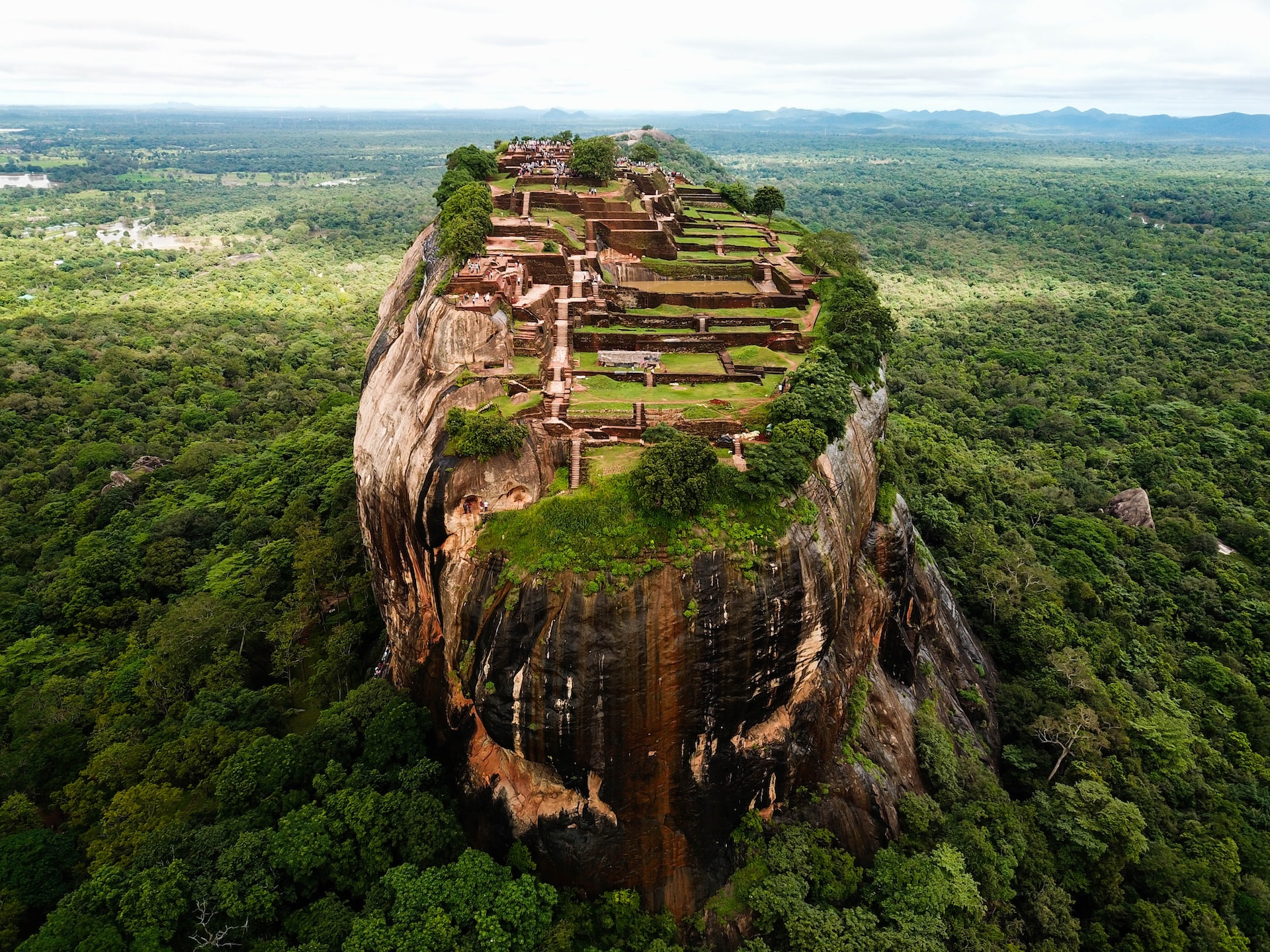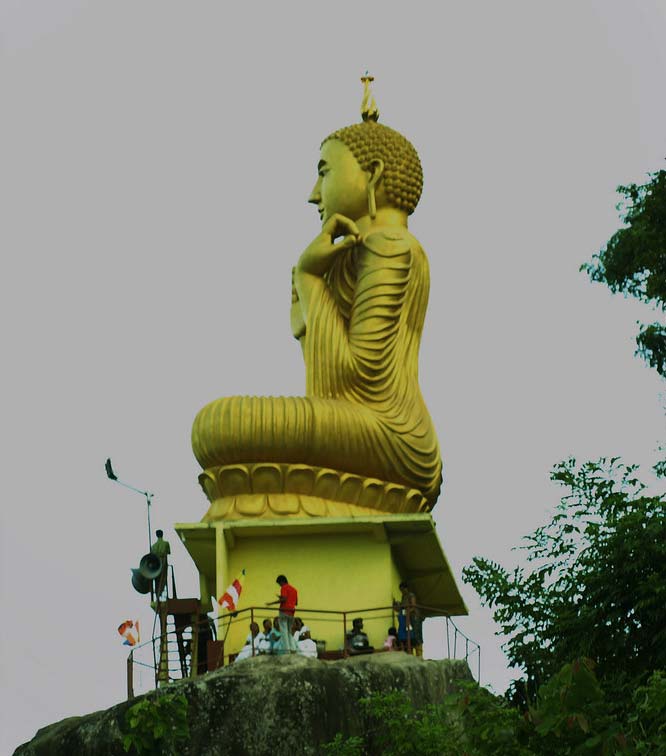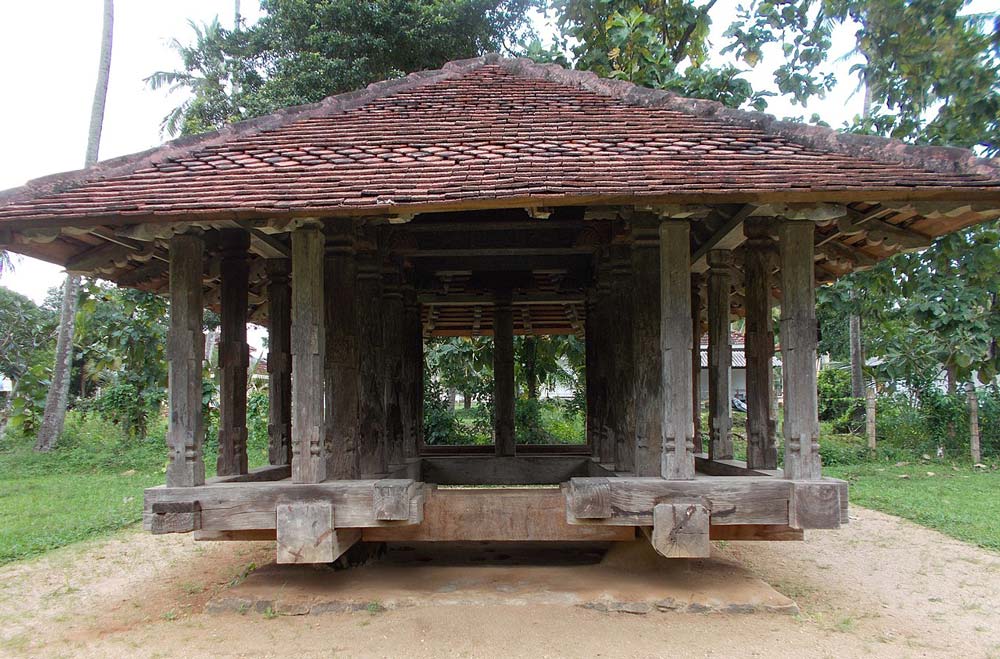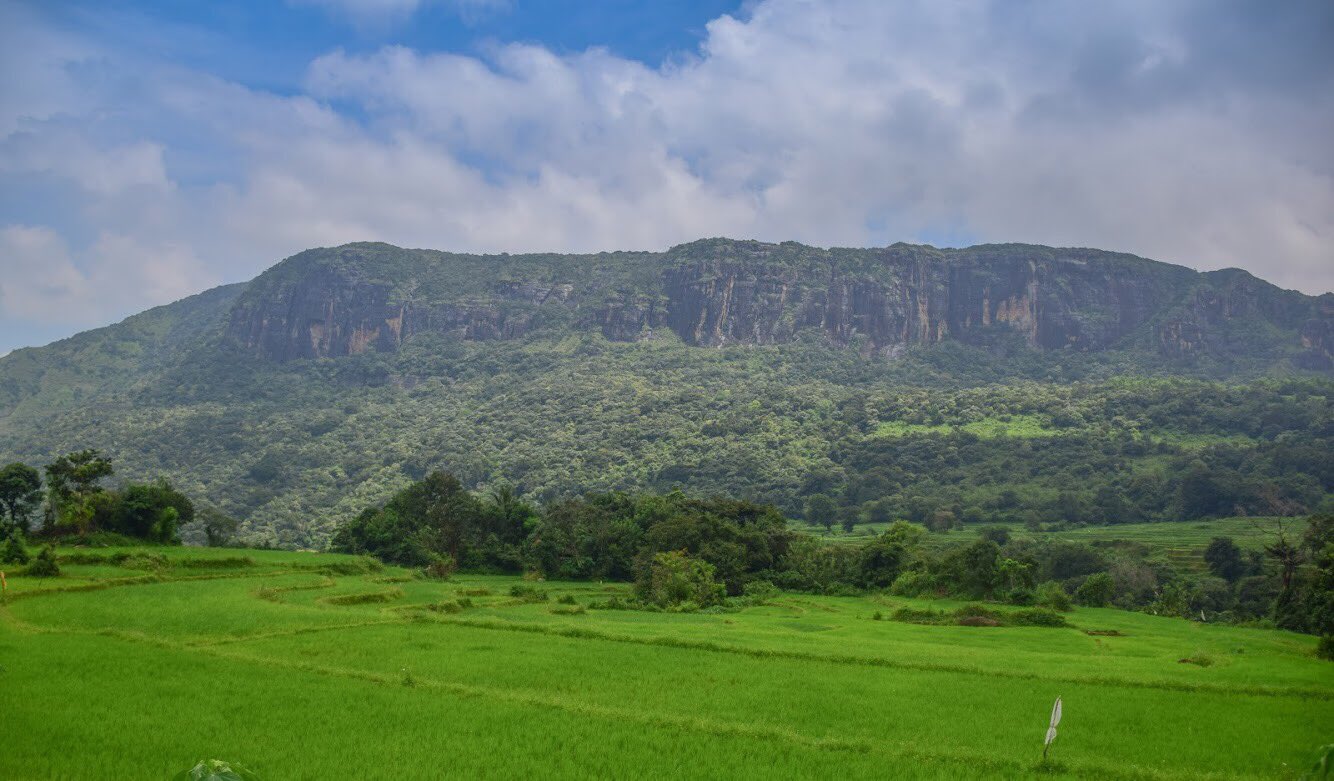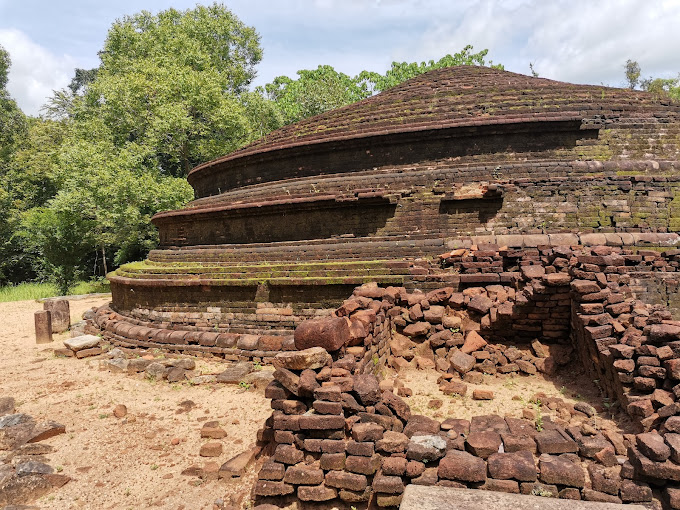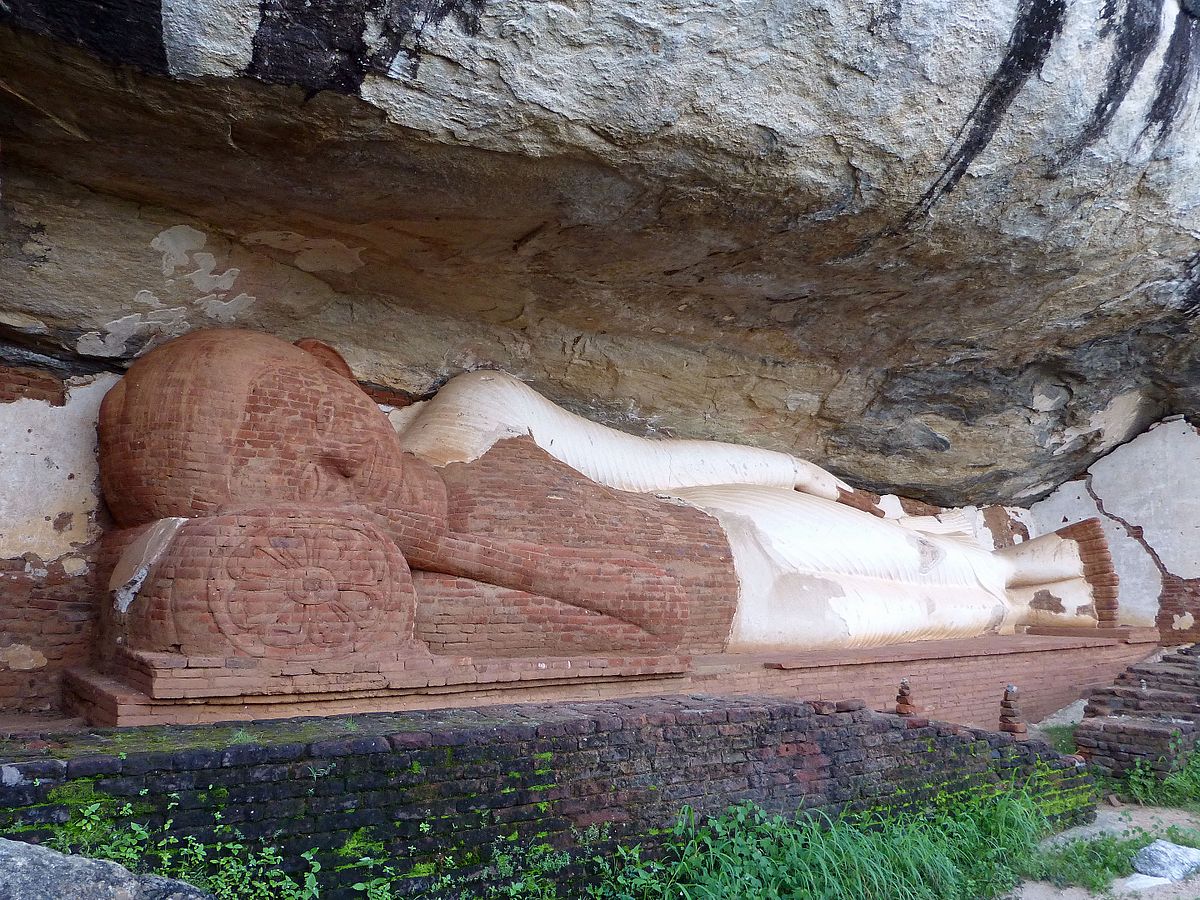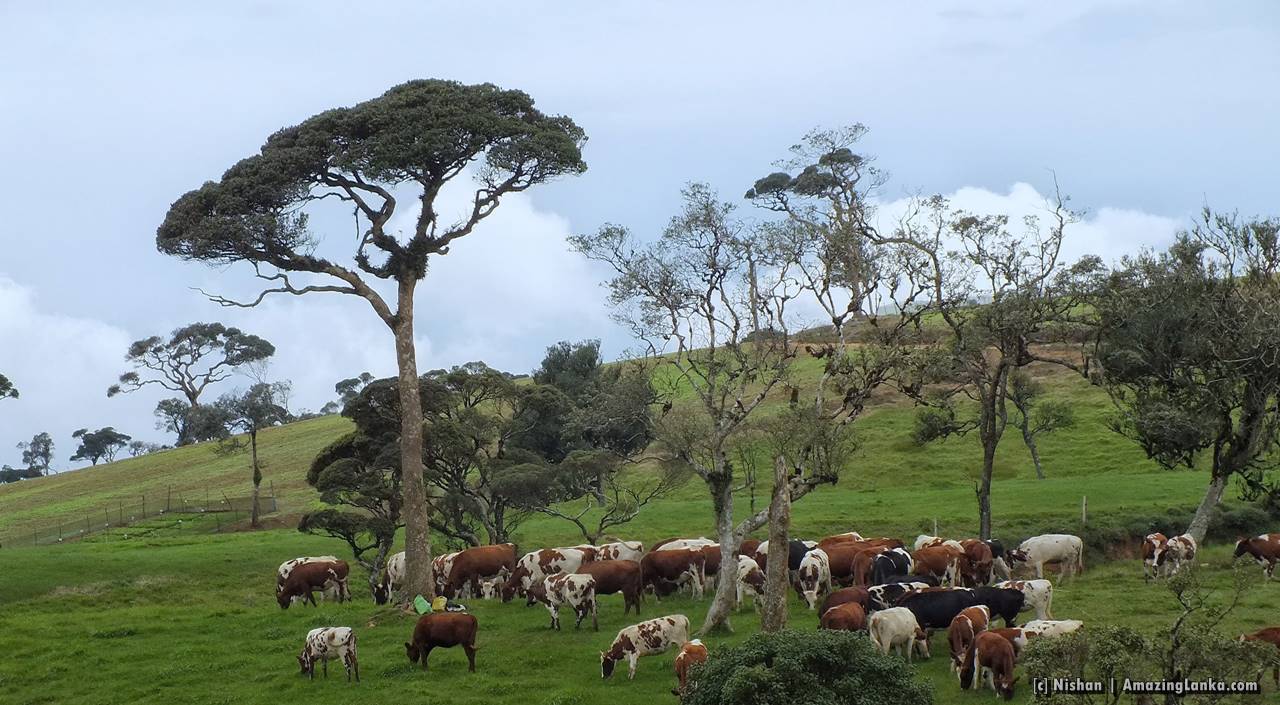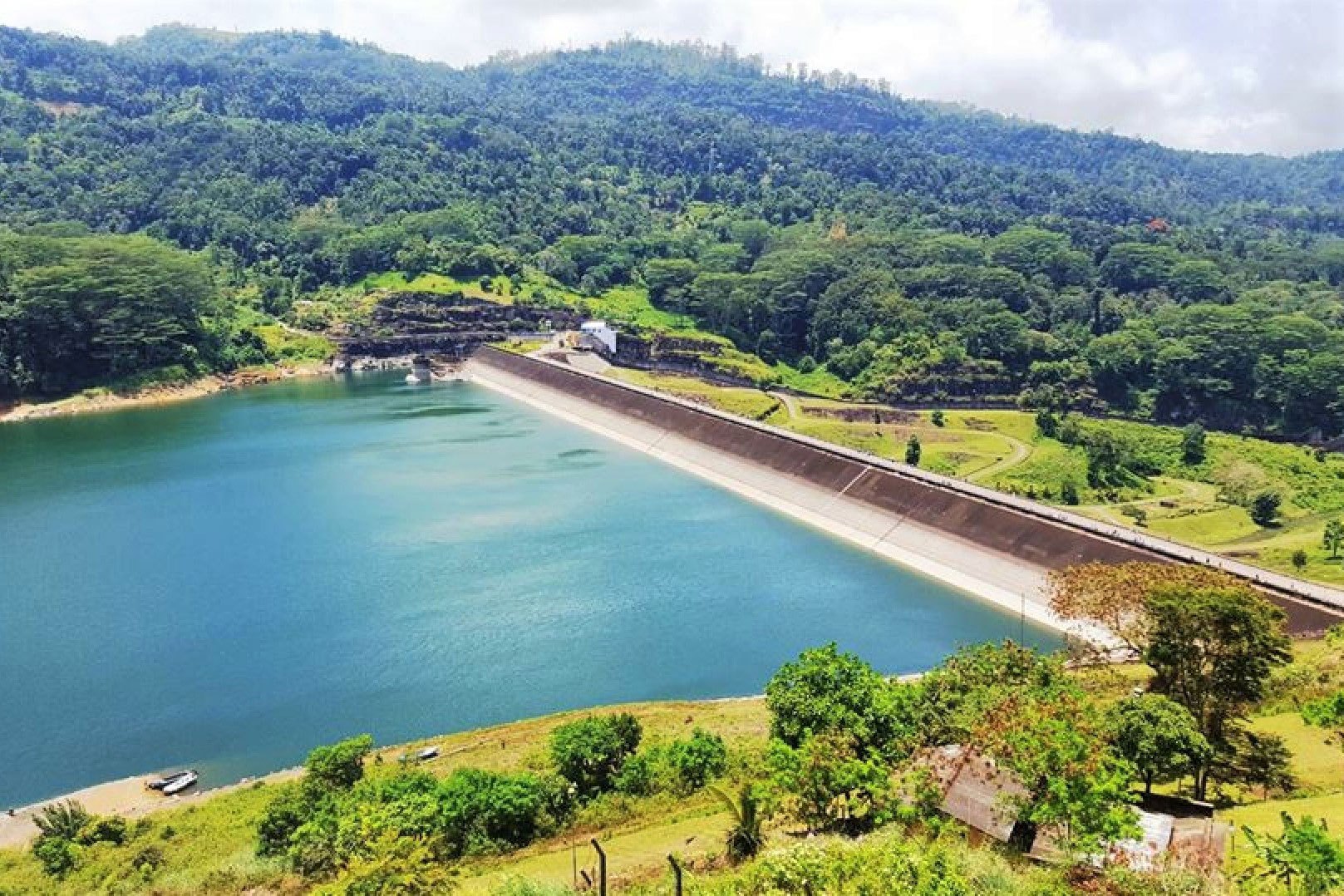Sigiriya or Sinhagiri is an ancient rock fortress located in Matale district. It is a site of historical and archaeological significance that is dominated by a massive column of rock approximately 180 metres (590 ft) high. Sigiriya, a world heritage site nominated by UNESCO in 1982. King Kashyapa (477 – 495 AD) built his palace on top of this rock and decorated its sides with colourful frescoes. On a small plateau about halfway up the side of this rock he built a gateway in the form of an enormous lion.The Lion Rock fortress of Sigiriya has been recently announced as one of the new Seven Wonders of the World by Bloomberg magazine.
It is likely that the area around Sigiriya may have been inhabited since prehistoric times. The earliest evidence of human habitation at Sigiriya is the Aligala rock shelter to the east of Sigiriya rock, indicating that the area was occupied nearly five thousand years ago during the Mesolithic Period.
Sigiriya is considered to be one of the most important urban planning sites of the first millennium, and the site plan is considered very elaborate and imaginative. The plan combined concepts of symmetry and asymmetry to intentionally interlock the man-made geometrical and natural forms of the surroundings. On the west side of the rock lies a park for the royals, laid out on a symmetrical plan; the park contains water-retaining structures, including sophisticated surface/subsurface hydraulic systems, some of which are working today. The south contains a man-made reservoir; these were extensively used from the previous capital of the dry zone of Sri Lanka. Five gates were placed at entrances. The more elaborate western gate is thought to have been reserved for the royals.
The paintings would have covered most of the western face of the rock, an area 140 metres long and 40 metres high. There are references in the graffiti to 500 ladies in these paintings. However, most have been lost forever. More frescoes, different from those on the rock face, can be seen elsewhere, for example on the ceiling of the location called the "Cobra Hood Cave". The true identity of the ladies in these paintings still has not been confirmed. There are various ideas about their identity. Some believe that they are the ladies of the kings while others think that they are women taking part in religious observances. These pictures have a close resemblance to paintings seen in the Ajanta Caves in India.
Originally this wall was so highly polished that the king could see himself whilst he walked alongside it. Made of brick masonry and covered in highly polished white plaster, the wall is now partially covered with verses scribbled by visitors, some of them dating from as early as the 8th century. People of all walks of life, from poets to provincial governors to housewives, wrote on the wall. they wrote poetry on varying subjects such as love, irony, and experiences of all sorts. This is the only evidence of poetry found in the Anuradhapura period.
Toilte Facilities: Yes
Disable accessibilities: No
Distance from Dambulla: 17km
Tickets: Yes
